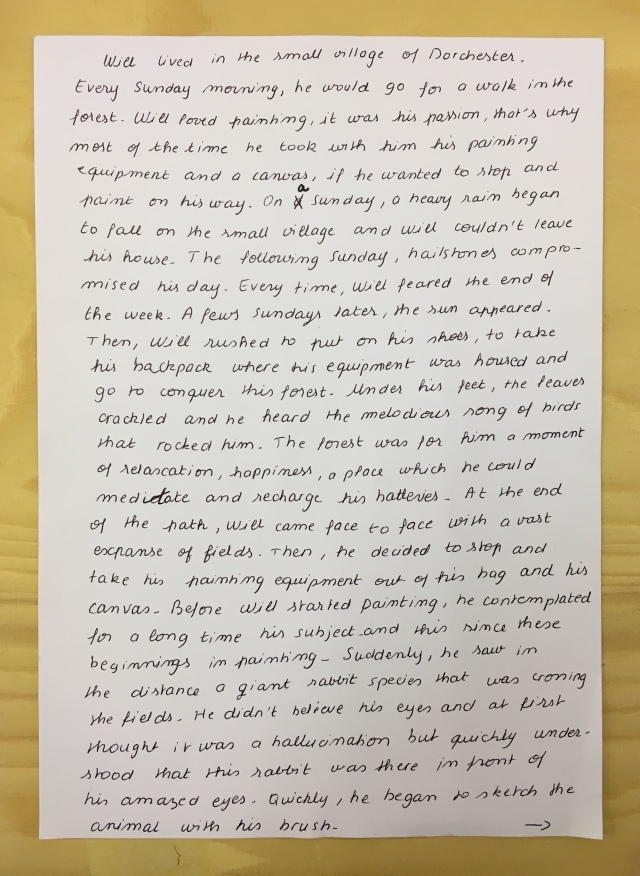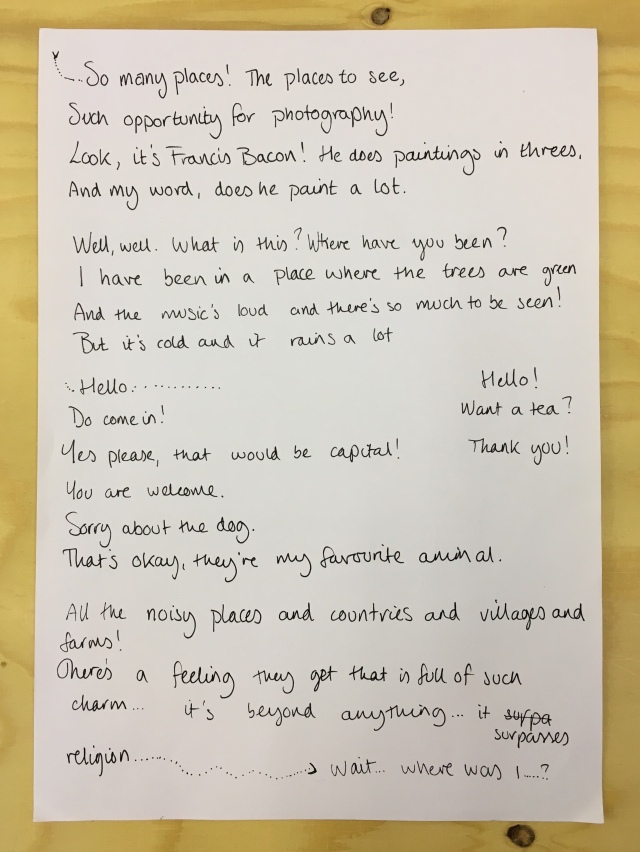This week we collaborated on a very special artwork. Six of us in our studio group were split into three pairs, and within each pair everyone wrote a creative piece of text wholly inspired by the other person. Each person then recited the text wrote for them in an art performance. The reader was positioned in the dark room, behind a light ring for atmospheric lighting, with a live feed of their recital displayed on a television outside the room, where everyone else watched.

The text I wrote was for Matilda, who is an exchange student from Dijon, France. While brainstorming for my text, I was inspired by ideas of travel, ideas of culture, likes and dislikes, and ideas of being welcome and welcoming. I knew I didn’t want to do anything traditional or predictable – firstly, because I don’t feel that would represent Matilda, and secondly, because I didn’t want existing writing conventions to limit my writing.

With this in mind, I remembered the ‘crimps’ from The Mighty Boosh – funny little songs with catchy rhythms and surreal lyrics. They de-construct norms of writing by speaking in abstract ideas and characters. I saw them as an effective subversion of writing and wanted to draw on that – I felt I could express ideas of travel and welcoming and culture in a piece of writing like this.
The finished performance, when everybody came together and read the texts aloud, was extremely effective! The lighting, variety, and monologue nature of it made it extremely atmospheric. To hear someone read a text about themselves, written by someone else, brought up interesting ideas of perspective, voice and writing style. I wonder how it would have been different if we had to read the text we wrote to the other person – would the effect be different?
It would certainly be interesting to change the readers around and see how the effect changes! However, I find this type of art a little too language-based, and I feel that language has quite a few flaws when it comes to conveying meaning. Ferdinand de Saussure, a Swiss linguist, argued that language is its own system, not directly connected to meaning, and the relationship between words and meaning is arbitrary. Although not directly, these ideas have influenced my art to be sensory than linguistic, so although this artwork was an eye-opening experiment, I will not be exploring it further – for now.
Leave a comment